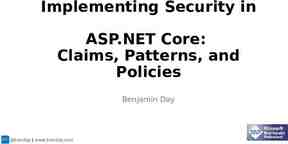MINISTRY FOR TEMPORARILY OCCUPIED TERRITORIES AND INTERNALLY
21 Slides2.21 MB

MINISTRY FOR TEMPORARILY OCCUPIED TERRITORIES AND INTERNALLY DISPLACED PERSONS Innovation for prevention CDD in FCV Conference June 13-14, 2019

Impact of conflict in the east of Ukraine Affected zone: Conflict negative impact on: Economic stability level Social stability level Security level reduction of: All regions of Ukraine: especially communities in the east of Ukraine. Social cohesion Accessibility of livelihoods Public security Supremacy of law Socially unprotected and non-resilient communities.

Conflict-affected areas in the east of Ukraine 1. Territory of Donetsk and Luhansk Regions, including: Liberated through military actions Temporarily occupied territories 2. Conflict-affected territories. 3. Territory of Ukraine. Low level of conflict influence High level of conflict influence 3 2 1

Possible conflicts in communities caused by the conflict in conditions of social insecurity Conflict between local population and former participants of armed formations Conflict caused by non-payment of salaries Conflict between host community members and internally displaced persons (IDP) Problem with housing provision to IDPs Conflict between local authorities and the community

Risk assessment of conflicts emergence in communities Ways to assess the risks of conflicts emergence in a community Guidelines Define basic indicators of vulnerability, social cohesion and the relevant risks facilitating implementation of measures on strengthening resilience of conflict-affected communities improvement of protection of socially vulnerable groups facilitation of reconciliation and social cohesion strengthening public security and access to justice, if local conditions allow

Usage of Guidelines Local government bodies Guidelines Assessment of risks of conflicts emergence in communities Resilient, socially protected community! Implementation of measures to increase capacities on conflicts response and prevention on community level

Stages of assessment of conflict emergence risks and their mitigation 1. 2. 3. 4. 5. Gathering information and community needs assessment. Information analysis, identification and prioritization of risk factors. Development and approval of activities to strengthen community capacity and mitigate risks. Implementation. Monitoring and evaluation of implementation, assessment of results, adjustment of activities. Gathering information and community needs assessment. Information analysis, identification and prioritization of risk factors. Development and approval of activities to strengthen community capacity and mitigate risks. Implementation Monitoring and evaluation of implementation, assessment of results, adjustment of activities.

Experts involvement by stages Sociologists Involved on stages 1, 2, and 5: 1. Gathering information and community needs assessment. 2. Information analysis, identification and prioritization of risk factors. 5. Monitoring and evaluation of implementation, assessment of results, adjustment of activities. Mediators Involved on stages 2 to 5: 2. Information analysis, identification and prioritization of risk factors. 3. Development and approval of activities to increase community capacity and mitigate risks. 4. Implementation. 5. Monitoring and evaluation of implementation, assessment of results, adjustment of activities.

Groups of indicators advisable to be used in information gathering and review of the community Social cohesion and security indicators Political indicators Socio-economic indicators

Social cohesion and security indicators allow: identification of groups within a local community, where tension exists and a conflict may arise, their leaders and representative NGOs associated with local offices of political forces indication of existence of paramilitaries and quasi-law enforcement organizations, figuring out their activity understanding how certain groups within a community perceive themselves, figuring out the most widespread stereotypes (religious, ethnic, or other prevailing stereotypes) detection of cases of vigilantism, unauthorized custody and cases of violence on political, national, religious, social, and other grounds in the community assessing how people perceive the level of professionalism of local government bodies, law enforcement and special bodies, namely police, as well as the overall level of trust towards them figuring out the role of local mass media in conflicts response/deepening; access of various groups within a community to local mass media; independence of local mass media from certain groups (persons) within a community

Political indicators will enable finding out: political goals of heads of local government bodies (according to programs of political forces they represent) facts of corruption among local authorities, whether there is a widespread opinion about corruptness of local authorities level of community members’ trust towards local authorities transparency of local elections interrelations of local and regional elites, their influence

Socio-economic indicators enable finding out: availability of local recovery and development plans; whether projects (programs) supported by international organizations, donor countries are being implemented in the community, and the level of involvement of local population into them important information in the field of economy, which can affect the risks of conflicts emergence in communities possibility of access to services rendered for proceeds of the state and local budgets, to local job market, to land and other natural resources of the community for various groups within the community information on quality of health care and educational institutions and services; status of life support systems the unemployment level in the community, existence of any local programs of re-training (advanced training) for community members information on the number, level of integration and satisfaction of IDPs, former servicemen of the Armed Forces of Ukraine, former participants of military formations of Ukraine

Results How it works: Information analysis and needs assessment help identifying: existing conflicts within the community; risk factors of emergence of new conflicts; causes for conflicts. 2 Action plan is prepared based on the analysis held: activities on resolving the original causes of existing conflicts; most efficient and relevant options of risks elimination or reduction; activities to maintain and deepen the dialogue between parties in existing or potential conflicts. Implementation is carried out as per the approved action plan. Planned system of monitoring and evaluation: enhances capacities of local government bodies; ensures timely, consistent, and efficient recording of risks of conflicts emergence

Results What local authorities will gain by using the guidelines: Increase of community capacities in response to existing and new risks Tools for building up plans and activities to increase community capacity Reduction of risks of conflicts emergence Tools for building up necessary models of cooperation and partner activity between various groups within the community Determining ways to resolve problems Determining ways of development of community potential

Component 2: Piloting activities to respond to the development challenges Pilot activities implementation under umbrella of two strategy documents on peacebuilding and recovery advanced by the MTOT, including: The ‘State Target Program for Recovery and Peacebuilding in the Eastern Regions of Ukraine (STP),’ which puts forward the GoU’s strategy for investments in economic recovery, infrastructure and services, and social resilience and peacebuilding programming based on community needs; and The ‘Strategy of Integration of Internally Displaced Persons and Implementation of Long-Term Solutions to Internal Displacement until 2020 (IDP Strategy),” which focuses on durable solutions and long-term social and economic integration of IDPs and also support to host communities. For IDP Strategy implementation GoU approved action plan on 21st of November, 2018. Pilot activities promoting national outreach and support to local populations in eastern Ukraine – national/local partnership key design dimension

Component Component2: 2:Piloting Pilotingactivities activitiesto torespond respondto tothe thedevelopment developmentchallenges challenges Fragility, Conflict and Violence (FCV) context Targets: Pilot activities to respond to the development needs of IDPs, former combatants and host communities as a complement to ongoing humanitarian response, recovery and peacebuilding efforts Build Government of Ukraine (GoU) capacity to implement innovative, development-oriented programming that could be brought to scale through future national and international financing Identification of programming areas for pilot sub projects was informed by the results of the 2016-2017 quantitative survey and qualitative research on the socio-economic impacts of displacement on IDPs, host communities and veterans Beneficiaries: The principles for choosing target beneficiaries for pilot support included: Communities with high concentrations of IDPs and/or veterans Areas where host communities are already vulnerable due to the impact of conflict reflected in lack of employment, effective service delivery and economic opportunities as well as social cleavages Communities where there are key financing gaps in responding to the developmental needs of IDP and host communities and veterans

Component 2: Piloting activities to respond to the development challenges Map of implementa tion KHARKIV DNIPROPETROVSK MYKOLAYIV ZAPORIZHYA Selected 10 sub-project pilots in 4 regions: 1. Kharkiv: Kupyansk city Pervomayskiy city Novovodolaha Integrated territorial community (ITG) 2. Dnipropetrvsk: Kryvyi Rih city Kamyanske city Sursko-Lytovska ITC 3. Zaporizhya: Zaporizhya city Berdyansk city 4. Mykolayiv: Mykolayiv Pervomaisk

Component 2: Piloting activities to respond to the development challenges Results chain skills development and livelihood generation psycho-social support targeted trainings and seminars on: - boosting entrepreneurial potential - launching, updating and support for new business development - jobs creation - financing and management - delivery of medical rehabilitation services - establishment of a local emergency response unit - providing psychological counseling - rehabilitation assistance and physiotherapy - improvement of quality of life for people with disabilities social infrastructure and public service delivery - delivery of social services - creation of social and cultural centers (hubs) - community engagement activities -improving the quality of service provision - development of social infrastructure

Challenges and Opportunities – “Adapted CDD” National-local partnership: Tripartite Cooperation Agreement - Memorandum of Understanding (MoU) and formalization between: - the head of the Local Council (the sub project initiator), - the implementing entity (the sub project implementer) and - MTOT represented by the State Secretary - the coordinator of the project Centralized vs. localized procurement and capacity building: Establishment of mechanism of funds flow for MTOT/national Ministry to partner with Local Councils in Eastern Ukraine to implement the pilots that includes development and approval of the budget program "Grant Proceeds from Other Sources" between Ministries of Economic Development and Trade, Ministry of Finance and State Treasury of Ukraine Managing flow of funds arrangements: Approval of the budget passport by the Cabinet of Ministers Decree enabling MTOT to make payments within the GoU budget cycle

Lessons/Questions: CDD attributes – but not ‘traditional CDD’ Partnership between national Ministry and Local Councils/eastern Ukraine to promote national outreach and support to conflict affected areas Training for Local Councils and competition/selection process to identify sub-projects for financing Reinforcing nascent decentralization efforts in Ukraine/not creating new community structures MoUs between Ministry and Local Councils, including community oversight of implementation Promoting partnerships between local councils and local NGOs in delivery Piloting use of prozorro (transparent procurement process) at local level but not community procurement QUESTIONS: How to consider expanding, scaling up pilot towards an investment/with a view to adapting CDD approaches to MIC context? How to further adapt fiduciary and procurement arrangements/devolve to local level in high-risk environment? How to further enhance participatory decision making and social accountability in sub-project implementation? How to ensure reinforcing decentralization efforts and address local capacity

MINISTRY FOR TEMPORARILY OCCUPIED TERRITORIES AND INTERNALLY DISPLACED PERSONS Thank you very much!






